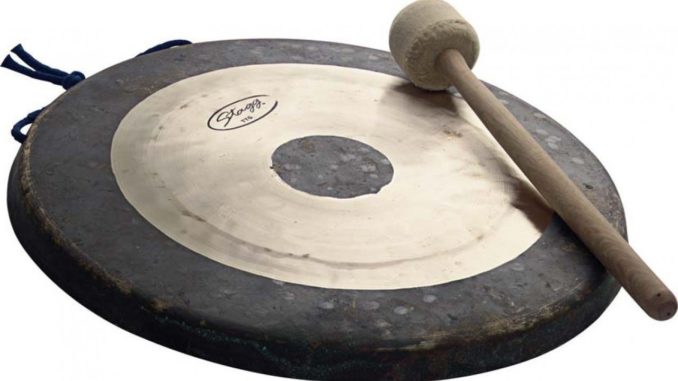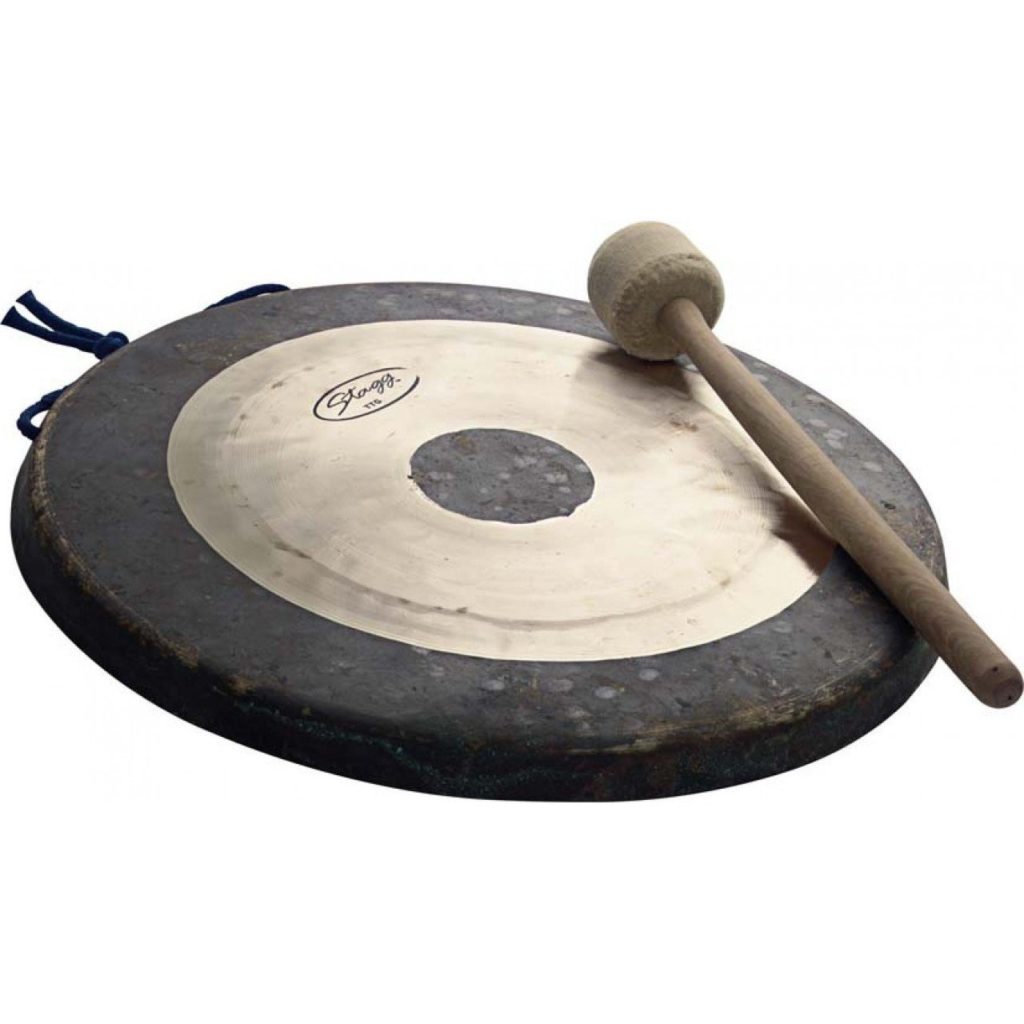
The tam-tam is a percussion instrument that has been used in music and other cultural practices around the world for centuries. Its distinctive sound and large size make it a powerful and expressive instrument, capable of creating a wide range of sounds and moods. In this article, we will explore the history, construction, and playing techniques of the tam-tam, as well as its cultural significance in various musical traditions.
The tam-tam is a type of gong. Gongs deliver two distinct sound profiles. Gongs with predominantly flat surfaces vibrate in multiple modes, resulting in a resonant “crash” rather than a specific pitch. These are often referred to as tam-tams, distinguishing them from bossed gongs, which produce well-defined tuned notes.

What is a Tam-Tam?
Tam-Tam History and Origins
The tam-tam’s origins can be traced back to ancient China, where it was used in ceremonial and religious practices. It was believed that the sound of the tam-tam could communicate with the spirits of the dead and the divine, and it was often used in rituals to invoke these beings. From China, the tam-tam spread to other parts of Asia, including Japan and Korea, where it was incorporated into various musical traditions.
In the West, the tam-tam gained popularity in the 19th century, when it was introduced as a concert instrument. Composers such as Gustav Mahler and Richard Wagner used the tam-tam in their orchestral works, adding a powerful and dramatic element to their music. The tam-tam has since become a staple of orchestral percussion sections and is used in a wide range of musical genres.
Tam-Tam Construction
The tam-tam is a large, circular percussion instrument made of metal, usually brass or bronze. It is suspended from a frame or stand by cords or straps, which allow it to vibrate freely and produce its characteristic sound. The size and thickness of the tam-tam determine its pitch and volume, with larger and thicker gongs producing lower tones and greater volume.
Tam-Tam Playing Techniques
Playing the tam-tam requires a combination of techniques, including striking, scraping, and dampening. The instrument can be played with a variety of mallets, ranging from soft to hard, to produce different tones and effects. When struck with a soft mallet, the tam-tam produces a deep, resonant tone, while a harder mallet produces a sharper, more piercing sound.
The tam-tam can also be played by scraping it with a metal object, such as a triangle beater or a drumstick. This produces a different type of sound, with a more sustained tone and a shimmering quality. The player can also dampen the sound of the tam-tam by placing their hand or a cloth over the surface of the gong, producing a muted effect.
Tam-Tam Cultural Significance
The tam-tam has played an important role in various musical traditions around the world, from ancient Chinese and Japanese music to Western classical and contemporary music. In Asia, the tam-tam is still used in traditional music and cultural practices, such as the Japanese tea ceremony and the Chinese Lion Dance. It is also used in martial arts practices, such as kendo and aikido, where it is struck to signal the beginning and end of training sessions.
In the West, the tam-tam has become an essential part of the modern orchestra, used in a wide range of musical genres, from classical and opera to film and television soundtracks. It is often used to create a sense of drama and tension, as well as to signal important musical transitions. The tam-tam has also been used in experimental music, where it is often played in unconventional ways to create unique and innovative sounds.
What does the Tam-Tam Sound Like?
The tam-tam has a deep and resonant sound that is often described as a “gong” or “bell-like” quality. When struck with a soft mallet, it produces a sustained and low-pitched sound that reverberates throughout the room. The sound of the tam-tam can range from subtle and mysterious to powerful and dramatic, depending on the playing technique and context in which it is used. When struck with a harder mallet, the tam-tam produces a sharper, more piercing sound that can cut through the texture of an orchestra or musical ensemble. Additionally, when scraped or dampened, the tam-tam can produce a variety of other sounds and effects, such as a shimmering or muted quality. Overall, the tam-tam is a versatile and expressive instrument that adds a unique and powerful element to any musical composition.
Conclusion
The tam-tam is a powerful and expressive percussion instrument that has played an important role in various musical traditions around the world. Its distinctive sound and large size make it a versatile and dynamic instrument, capable of creating a wide range of sounds and moods. Whether used in traditional Asian music or Western classical and contemporary music, the tam-tam remains an essential part of the percussion section and adds a dramatic element to any musical ensemble. Its rich history, diverse cultural significance, and unique sound make the tam-tam a fascinating instrument that continues to captivate musicians and audiences alike. As the world of music continues to evolve and innovate, the tam-tam remains a timeless and essential component of the percussion family, and will continue to inspire musicians for generations to come.
Is a tam-tam a drum?
There’s some confusion surrounding the term “tam-tam.” While it can be used for a drum in some contexts, it’s not entirely accurate. Here’s a breakdown:
- Technically: A tam-tam refers to a specific type of gong, not a drum. It’s a large, flat, typically bronze disc played by striking it with a mallet. Gongs are known for their long-lasting, resonant sound.
- Origin of Confusion: The term “tam-tam” likely originated as an onomatopoeia mimicking the sound of a drum. Over time, in Western musical scores, composers sometimes used “tam-tam” to refer to a large, deep-pitched gong. This usage contributed to the misconception.
- Regional Variations: In some Southeast Asian regions, “tam-tam” might be a generic term used for various percussion instruments, including drums. However, in the context of Western orchestras and musical instruments, “tam-tam” specifically refers to a gong.
Here’s a table summarizing the key points:
| Term | Instrument | Description |
|---|---|---|
| Tam-tam (Western Context) | Gong | Large, flat, metal disc played with a mallet, producing a long, resonant sound. |
| Drum | Percussion instrument | Hollow body with a drumhead stretched across one or both ends, played by striking the head with hands, sticks, or mallets. Creates a percussive sound with varying pitches depending on the drum type. |
| Tam-tam (Some Southeast Asian Regions) | Percussion instrument (may include drums) | Generic term used for various percussion instruments, depending on the specific region. |
drive_spreadsheetExport to Sheets
To avoid confusion, it’s best to use more specific terms like “drum” or “gong” when referring to these instruments.
What is a Cimbalom?
What is a Stylophone?
What is a Zurna?
What is an Otomatone?
What is a Kora?
What is a Güiro?
